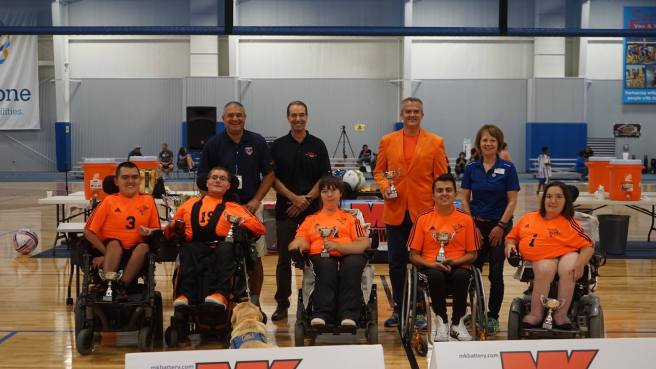My heart is broken. Many of you are familiar with the awful tragedies that have affected Orlando as of late – an absolutely horrific terrorist attack at a gay nightclub and a boy killed by an alligator at Disney World. But the death of Julianna Snow also occurred recently, going largely under the radar.
You may have heard of Julianna, the five-year-old girl who media outlets portrayed as choosing “heaven over hospital” in the event she got sick again. I, and many of my friends with neuromuscular disabilities, felt a special kinship with Julianna. She, too, shared a neuromuscular disorder that involved use of a wheelchair and respiratory therapy. (She also believed one could never have too much glitter, which I personally feel is a great motto.) News coverage and the underlying news item – that Julianna’s parents would allow a child so young to refuse life-saving measures – concerned us deeply.
Aside from personal views, the item was probably deemed “newsworthy” because it diverges from bioethical and medico-legal norms. Under American jurisprudence, one must give informed consent to treatment. Similarly, one needs capacity in order to exercise the right to make autonomous medical decisions. Traditionally, and as practiced by the American Academy of Pediatrics, whether or not minors can give consent is governed by the Rule of Sevens. That is, children younger than seven lack the capacity to make medical decisions; children ages seven through 13 have sufficient autonomy to be consulted in decision-making processes; and children ages 14 and above are sufficiently developed to participate heavily in the decision-making process. Keep in mind that Julianna’s parents surrendered decision-making authority to her at age five.
I don’t doubt that Juliana’s parents cared for her. Their compassion is evident in family video. But Juliana’s parents were heavily influenced by the medical model of disability; her mother is a physician. Because doctors cannot cure disability, they tend to be baffled by it. In fact, physicians regularly underestimate the quality of life experienced by people with disabilities. And there is no doubt that Dr. Moon (Julianna’s mother) glorified heaven, describing as a place where Julianna could run and play
Are you beginning to see the problem? Even in a wheelchair, even with a ventilator, Julianna could have driven quickly enough to feel the wind blow through her hair and engaged in a bevy of joyous activities. To demonstrate the bright future awaiting Julianna, Emily Wolinsky launched the Dear Julianna Project, administered by NMD United, a peer-led advocacy group for adults with neuromuscular disorders. Many adults with disabilities – from around the world – wrote not only to Julianna’s family, but to the families of other diagnosed children, to share that the future is not doom and gloom. We have each had our fair share of hospital stays and unpleasant medical procedures, but we are also attorneys, artists, spouses, entertainers, volunteers, philosophers, and parents.
I often wonder whether Julianna had the opportunity to read any of our letters (or have them read to her, considering her age). Her parents were aware of the Project, and claimed it was “basically a slap in the face.” Again, Dr. Moon’s reaction shows a real failure to understand the disability perspective.
I hope you are happy in heaven, Julianna, but I don’t care whether you remain in a wheelchair. It need have no bearing on the enjoyability of one’s existence.
The author wishes to disclose that she is a participant in the Dear Julianna letter-writing campaign, and also contributed financially to it.

 Most commonly, this symbol isused to mark handicapped parking spaces, but it also indicates the presence of other accessible design features for people with disabilities. It features a stick figure sitting on a wheel. Pretty standard… It does the job, and has been doing it for nearly 50 years!
Most commonly, this symbol isused to mark handicapped parking spaces, but it also indicates the presence of other accessible design features for people with disabilities. It features a stick figure sitting on a wheel. Pretty standard… It does the job, and has been doing it for nearly 50 years! and happened to park in a space marked with it. I had forgotten that
and happened to park in a space marked with it. I had forgotten that 